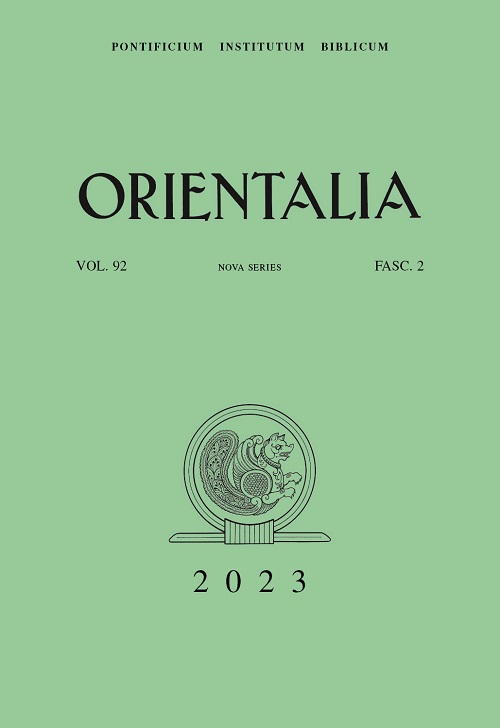next article in this issue  |

Preview first page |
Document Details : Title: Untersuchungen zu Zustandsverben im Sumerischen Author(s): BROSE, Marc Journal: Orientalia Volume: 91 Issue: 2 Date: 2022 Pages: 153-221 DOI: 10.2143/ORI.91.2.3293008 Abstract : The following article discusses several statements about stative verbs in the Sumerian language brought forward by scholars in the last three decades. After two preliminary sections presenting the statements under observation (chap. 2) and determining the inventory of verbs which are thought to be stative verbs – including also an excursus about the linguistic background (chap. 3), the main parts discuss the following questions: 1. Did stative verbs build forms of the marû category, and if so, are their meanings always dynamic? (chap. 4) 2. Does the verbal prefix ba- always work in connection with such verbs as trigger for a dynamic meaning in the finite ḫamṭu verbal forms? (chap. 5). The following results are revealed: Only the verbs me 'be', ki—aĝ2 'love; like' and ḫul—geg 'hate; dislike' show indeed a defective paradigm without any marû form. The semantics of the marû forms of the other discussed verbs – tuku 'have'; zu 'know', ĝal2 'be existent', gub 'stand', nu2 'sit', tuš 'sit' and de-adjectival verbs like tur 'be small', dugud 'be heavy' etc. – are always dynamic, but not restricted to the most prominent functions 'change of state' and 'causative' (quite often in transitive clauses and sentences), but can show other nuances: a remaining in the state ('continuous') and a demonstration or manifestation of the state ('demonstrative-manifestative'). Similarly, the prefix ba- does not always work in connection with such verbs as trigger of dynamism (mainly 'change of state') in the finite ḫamṭu forms, as demonstrated by a selection of several examples showing stative meaning. Since the study was intended as a pilot study, the investigation is restricted to a selected corpus: the rulers’ inscriptions and the literary texts. |
|


